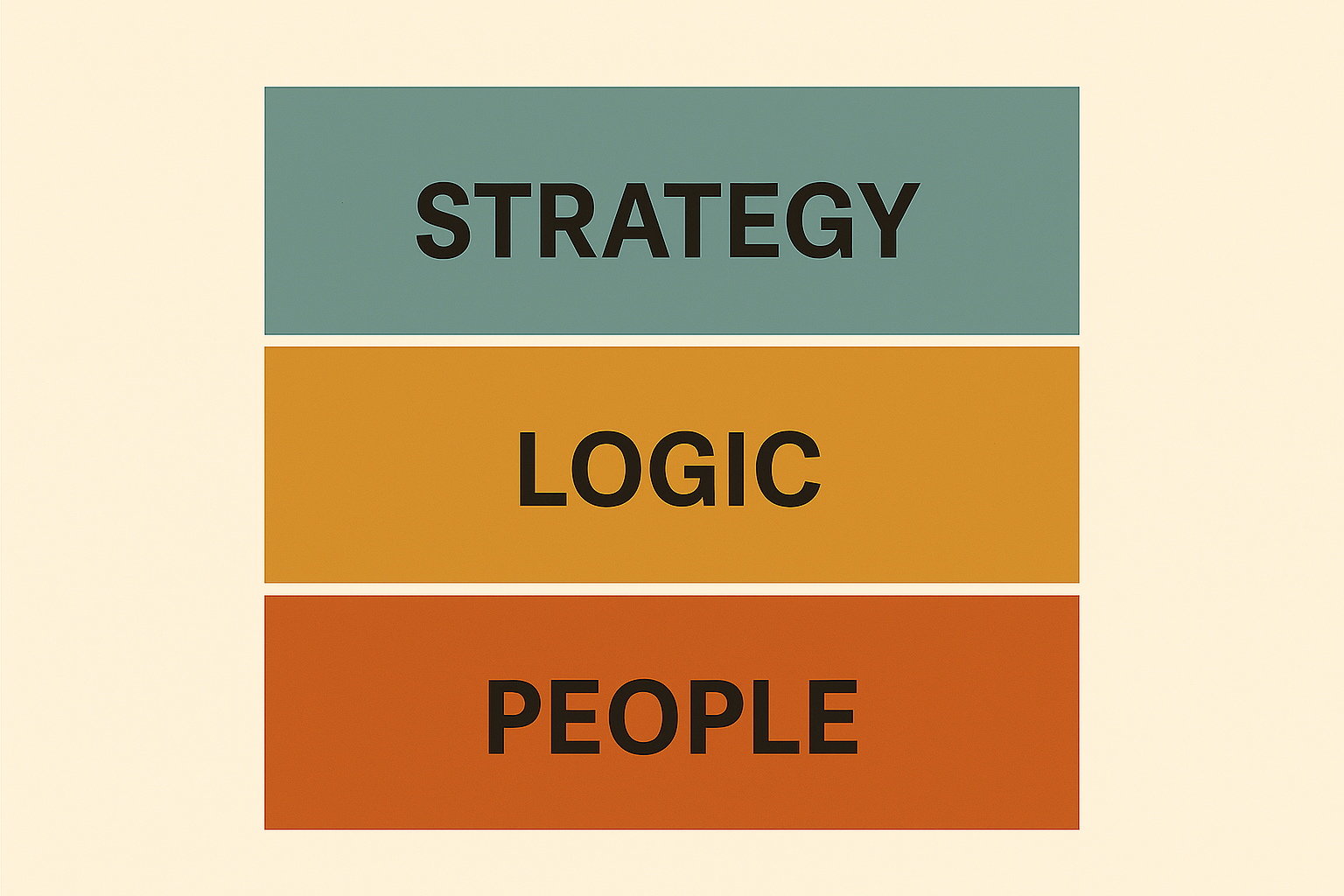ToC Platform: Starting at the Start
As promised, we are building out our online platform for supporting Theory of Change (ToC) out in the open. Before we even write a line of code, we're putting down our thoughts and ideas - sketching out the problems we're trying to solve and some of the solutions we've come up with.
Rather than leap too boldly into the unknown, we’re taking time to map the terrain we’re operating in. From our reading and research, discussions with folks, and feedback via questionnaire, we've determined there are at least three main conceptual domains to consider: Strategy, Logic and People.

We might think of these as three "layers" of a ToC system - though "pillars" might be a more apt metaphor. Whatever the case, these three aspects form the architectural base of our platform: Strategy representing the play area where ideas and theories are explored, Logic the zone of accountability and concrete action and People where we place social connections, lived experiences and the roles played.
Strategy Layer
Where direction takes shape. This layer focuses on goals, priorities, and desired outcomes. It’s where you define what matters most, make trade-offs explicit, and sketch the path forward. The Strategy Layer is your compass - it helps guide decisions without locking you into rigid plans.
- Artefacts include: theories, goals and objectives, roadmaps, stories, SWOT and other high-level analyses.
- Questions asked: What are we trying to achieve? What forces are shaping our direction?
Logic Layer
Translating the abstract into the actionable. This layer is the infrastructure beneath your thinking. It connects the assumptions, causal links, tensions, and contradictions arising out of your strategy and provides outputs for reporting and presentation. Primarily derived from other layers, the Logic Layer exposes gaps or opportunities in your Strategy and People Layers.
- Artefacts include: Logic models, feedback loops, constraint maps, action plans, funder and other stakeholder reports.
- Questions asked: Why do we think this will work? What’s missing, messy, or in conflict? How are we going to make this happen?
People Layer
Relationships at the core of every change effort. This layer is where team configurations, stakeholders, and co-design participants are held. This is where we build teams, plan our outreach and follow up on commitments. Think of it less as “users” and more as “story-carriers.”
- Artefacts include: Stakeholder maps, role definitions, engagement models, community forums and connections to social spaces.
- Questions asked: Who’s responsible? Who’s affected? What’s being said - or left unsaid? Who is being included - and who is not?
Summary
All of this reflects our current thinking and best understanding. The names and contents of these layers aren’t set in stone. We expect them to shift as we learn and we may add new layers, remove others, or reframe how they relate to each other as we go on. That evolution won’t come from a blank slate, but through listening, reading, researching and prototyping. Most importantly, it will come from having meaningful conversations with people who are actively engaged in creating change.
We’d love to be part of those conversations with you. If you’re a strategist, facilitator, organiser, or simply someone wrestling with complexity and care, we want to hear your thoughts. Your feedback will help us build a shared understanding of what an open, adaptive Theory of Change platform should look like. If you haven't already, please take time to look at our questionnaire - your input is hugely appreciated.
We'll be posting more details of our project as we continue. In the meantime, please feel free to follow us via LinkedIn or create a Subscription to our site. You can subscribe for free, though we do have a paid tier if you would like to support our open source development work.
Next Steps
In the next post we'll be examine the requirements for the People Layer. Look out for "ToC: People First"